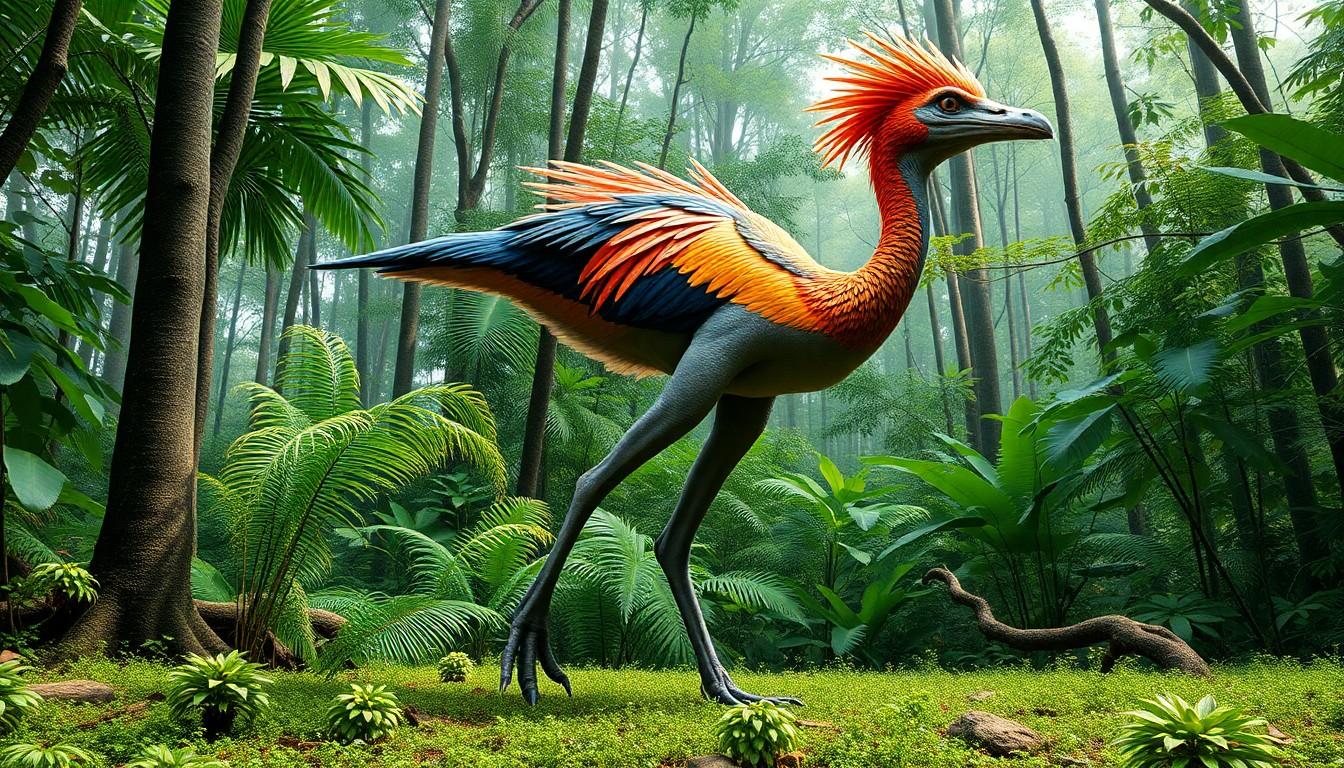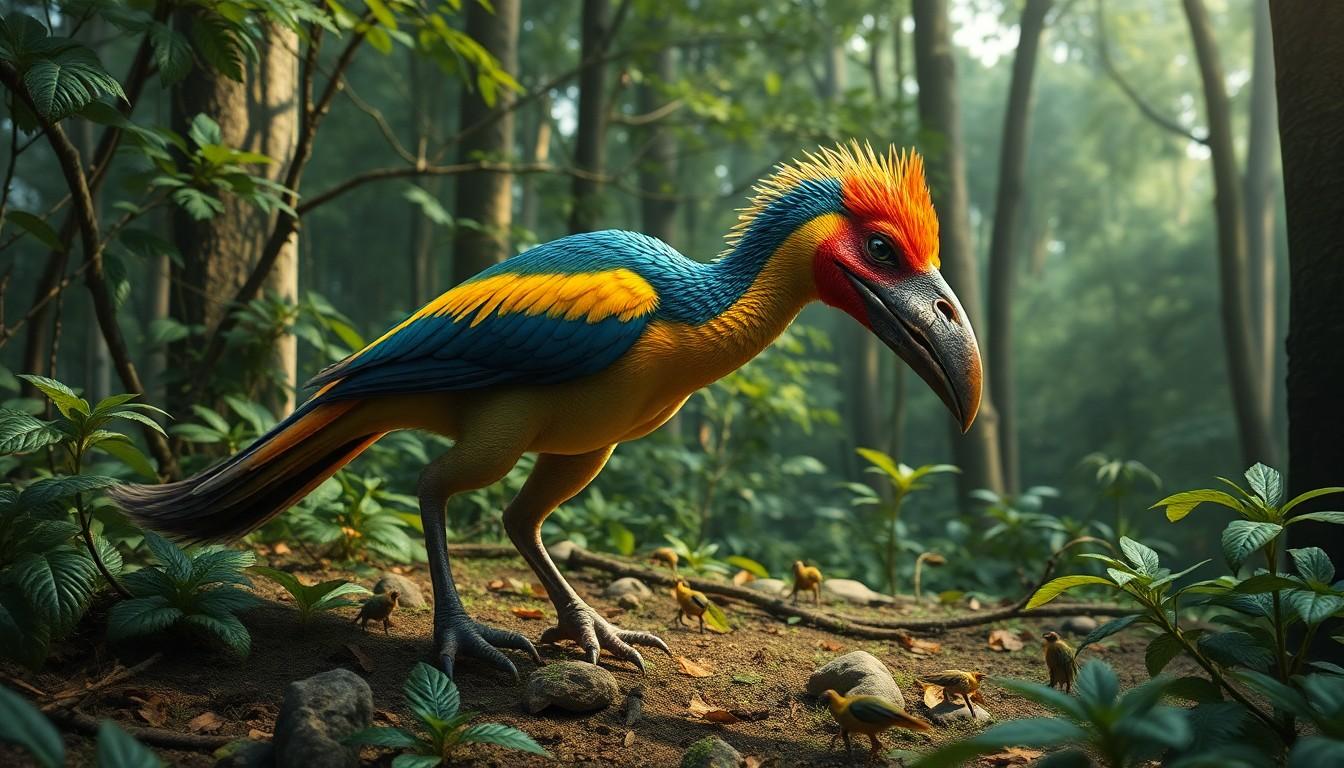Imagine a creature that’s part dinosaur, part bird, and all kinds of fascinating. Enter the ghartheroppo, a unique marvel of nature that’s sure to tickle the curiosity of any animal lover or science enthusiast. With its quirky features and intriguing behavior, this little-known species is more than just a conversation starter—it’s a glimpse into the wonders of evolution.
As researchers dive deeper into the world of ghartheroppos, they uncover secrets that challenge our understanding of prehistoric life. This isn’t just another entry on the animal kingdom’s roster; it’s a reminder that nature has a flair for the dramatic. Get ready to explore the quirks and charms of the ghartheroppo, and who knows? You might just find yourself captivated by its story.
Overview of Ghartheroppo
Ghartheroppo represents a unique blend of both dinosaur and bird characteristics. This small, feathered creature showcases vital adaptations that facilitate its survival in diverse habitats. It possesses lightweight bones that enhance agility and speed, traits beneficial for evading predators. Distinctive features include a beak-like snout, which aids in foraging, and sharp claws perfect for climbing and grasping.
Researchers continue to explore the ghartheroppo’s significance in the evolutionary tree. Fossil evidence indicates that this species lived during the late Cretaceous period, close to the era of the last dinosaurs. Its ability to exhibit behaviors, such as flocking and nesting, mirrors those seen in modern bird species.
Insights gained from studying ghartheroppo challenge long-held beliefs about the transitions between dinosaurs and birds. Some experts emphasize that this creature may hold critical clues about the development of flight and other avian traits. Current studies focus on its ecological role and interactions within prehistoric ecosystems.
The ghartheroppo’s discovery has sparked interest among paleontologists and evolutionary biologists. Ongoing excavations aim to uncover additional fossils that can provide further understanding of its anatomy and life cycle. Notably, its anatomical features may reveal the evolutionary pressures that influenced its development.
Understanding ghartheroppo enhances appreciation of the complexities in the evolution of life on Earth. By examining its anatomical and behavioral traits, scholars gain valuable insight into how species adapt over time.
Physical Characteristics

Ghartheroppos exhibit distinctive physical traits that highlight their unique evolutionary position. Their anatomy combines elements of both dinosaurs and birds, making them an intriguing study subject.
Size and Shape
Ghartheroppos typically measure around 1 to 1.5 meters in length, depending on their specific species. Their lightweight, elongated bodies enhance agility and enable swift movement. Long limbs support their active lifestyle, allowing for efficient navigation in their environment. A slim neck, combined with a small head, provides an aerodynamic form. This streamlined shape aids in foraging and climbing, essential for their survival.
Unique Features
Ghartheroppos possess several unique adaptations not commonly found in their relatives. A beak-like snout facilitates efficient feeding on various plant materials and insects. Sharp claws, specialized for grasping and climbing, assist in navigating arboreal habitats. Some species showcase vibrant plumage, which plays a significant role in mating displays and social interactions. Lightweight bones contribute to their agility while maintaining overall structural integrity. These traits collectively enhance their ability to thrive in diverse ecosystems during the late Cretaceous period.
Habitat and Distribution
Ghartheroppos thrived in varying habitats during the late Cretaceous period. Fossil evidence pinpoints their existence in a range of locations that broadens understanding of early avian and dinosaur habitats.
Geographic Range
Ghartheroppo fossils have been discovered across several continents, including North America, Europe, and Asia. These findings suggest that they had a wide geographic distribution. Specific sites indicate they inhabited regions with diverse ecosystems. Proximity to water sources appears vital for their survival. Their presence in sedimentary rock formations indicates they favored areas with abundant vegetation.
Environmental Preferences
Ghartheroppos preferred environments rich in resources, favoring woodlands and coastal areas. These habitats provided necessary food sources and nesting sites. Dense vegetation allowed for effective foraging and protection from predators. Additionally, they adapted to seasonal changes, which facilitated survival during varying climatic conditions. Their ability to thrive in multiple ecological settings underscores versatility in adaptation, showcasing their evolutionary significance.
Behavior and Diet
Ghartheroppos exhibit intriguing behaviors and feeding strategies that highlight their adaptability in late Cretaceous ecosystems.
Feeding Habits
Ghartheroppos primarily forage on insects, small mammals, and plant material, showcasing a diverse diet. The beak-like snout enables efficient consumption of various food types. Sharp claws allow them to extract prey from crevices and grasp vegetation with ease. This omnivorous diet supports their survival across different habitats. Preferred foraging grounds include woodlands and coastal areas rich in resources, offering ample food sources. Fossil evidence indicates seasonal variations in diet, emphasizing their ability to adapt to changing environments.
Social Structure
Social interactions among ghartheroppos reflect behaviors seen in modern bird species. They likely lived in small flocks, enhancing their safety from predators. Group dynamics enable cooperation during foraging and nesting activities. Nesting sites typically consist of sheltered areas, providing protection for eggs and young. Communication within flocks probably involved vocalizations and displays, reinforcing social bonds. Evidence from fossilized nesting sites further supports the notion of communal care for offspring, highlighting their complex social structures. These behaviors contribute valuable insights into the transition from dinosaurs to birds.
Significance in Paleontology
Understanding the ghartheroppo offers critical insights into the evolutionary link between dinosaurs and birds. Fossil evidence firmly places this creature in the late Cretaceous period, an era close to the last dinosaurs. The blend of characteristics, such as lightweight bones and a beak-like snout, showcases adaptations that highlight evolutionary transitions. Paleontologists consider these features essential for exploring the origins of avian traits.
Evidence from various global fossil sites indicates a wide distribution of ghartheroppos across continents, including North America, Europe, and Asia. Such geography underscores the adaptability of this species to diverse environmental conditions. Resource-rich habitats, such as woodlands and coastal areas, became vital for their survival, demonstrating an ability to thrive across fluctuating ecosystems.
Behaviorally, ghartheroppos exhibit complex social structures reminiscent of modern birds. Living in small flocks likely provided safety from predators while enhancing foraging success through cooperation. Their diet, consisting of insects, small mammals, and plant material, underscores adaptive strategies in resource gathering. Fossil evidence reveals seasonal dietary variations, marking a sophisticated approach to survival.
Nesting behaviors also reveal significant evolutionary implications. Sheltered nesting sites offered protection for eggs and young, supporting communal care among individuals. Such nurturing behaviors reflect advanced social dynamics, presenting crucial connections to the development of bird-like characteristics. These findings collectively emphasize the ghartheroppo’s role as a pivotal species in understanding the evolutionary journey from dinosaurs to present-day avians.
Conclusion
The ghartheroppo stands out as a remarkable example of evolutionary adaptation. Its unique blend of dinosaur and bird features offers invaluable insights into the transition between these two groups. As research continues to uncover more about this fascinating creature, it promises to reshape understanding of prehistoric ecosystems.
The discoveries surrounding the ghartheroppo not only highlight its agility and social behaviors but also emphasize its role in the broader narrative of evolution. As paleontologists delve deeper into its fossil record, they may reveal even more about its life and the environments it inhabited. The ongoing exploration of ghartheroppos will undoubtedly enrich the study of evolutionary biology for years to come.




